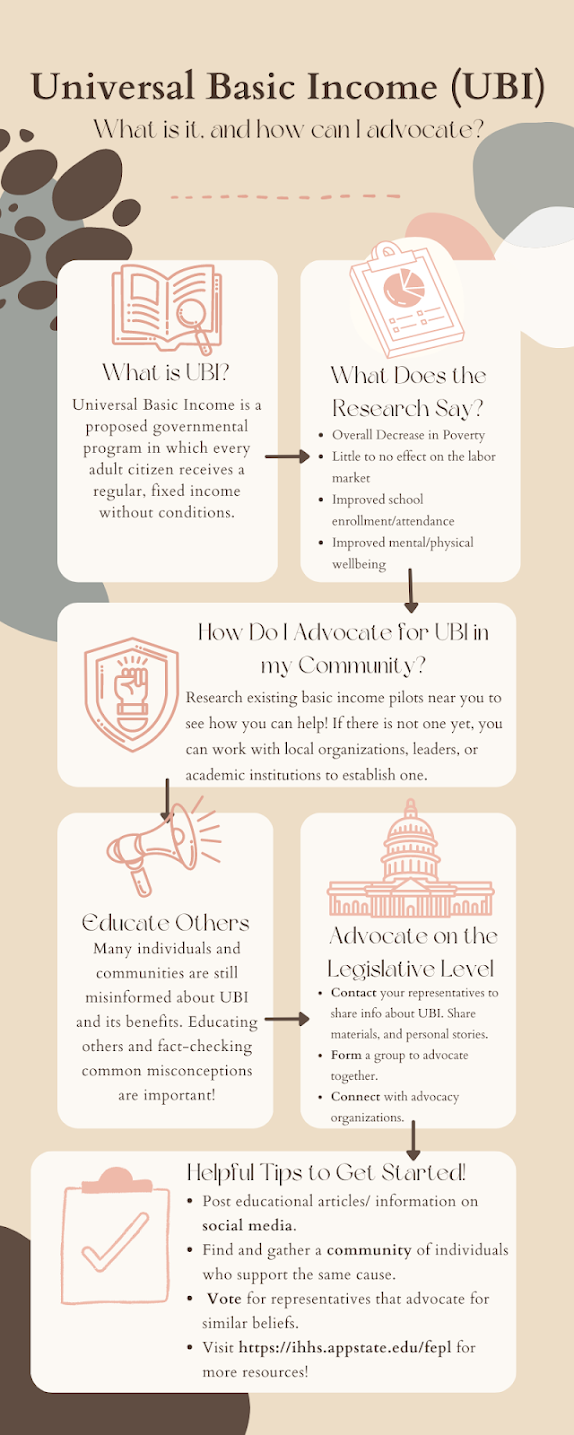What is Universal Basic Income?


The American Rescue Plan, last year’s pandemic relief package, could be the long-term strategy for ending child poverty in America. Studies conducted over the past year have found significant evidence that one policy expansion effectively reduces hardship, strengthens financial security for families and supports mothers in the workplace: the monthly Child Tax Credit.
In a recently published study by our own Dr. Leah Hamilton and colleagues surveyed some 1,200 parents who received the Child Tax Credit in monthly installments from July to December 2021. They also surveyed a comparison group of Americans with similar income levels in order to draw conclusions about the potential benefits of receiving a monthly tax credit in a wide range of areas including work, health, and financial stability.
We found that families were more financially secure, more likely to be working and better equipped to make healthy choices as a result of the Child Tax Credit's monthly installments. The wide range of observed benefits for families, coupled with the policy’s established cost effectiveness, makes it a prime candidate for long-term use to strengthen American households.
Our study found that families used the monthly Child Tax Credit to cover routine costs that one might expect families to regularly contend with on a month-to-month basis. Groceries, rent payments and clothing were among some of the most common uses. In addition to covering these expenses, families receiving the CTC were less likely to be evicted from their homes. They were also able to pay down credit card debt, save for emergency funds and forgo alternative income sources like selling blood plasma and taking out payday loans.
As the Census Bureau observed, hunger in households receiving the monthly Child Tax Credit was cut by 24 percent after the first payment in July 2021. We observed that not only were fewer families going hungry, but families were also equipped to make healthier food choices. Recipient households were more likely to increase their fruit consumption, as well as their meat and protein consumption, and more likely to report increased ability to afford balanced meals in comparison to households not receiving the credit.
In the end, fighting household hunger would likely bring measurable improvements on child development. A 2015 Center for American Progress paper found that food insecurity significantly increases a child’s chances of long-term developmental delays. Reducing hunger through policies such as CTC would lift millions of children out of situations in which their income level would have an adverse effect on their education and development.
Millions of mothers left the workforce because they were either employed in sectors that were more vulnerable to layoffs (like the service industry) or due to increased caregiving responsibilities (ill family members, daycare closures, remote schooling, etc). Parent and child mental health declined and domestic violence increased. The monthly support of the Child Tax Credit was a lifeline for those who struggled through the pandemic.
Ninety-four percent of parents receiving monthly Child Tax Credit payments reported they would work the same amount or more as a result of the credit. Over half of those who reported working less were parents of infants or toddlers. After the credit expired, approximately 1.4 million households experienced a decline in employment of some kind. Multiple analyses have found no significant differences in employment trends for recipients and non-recipients over the six months of the credit. Contrary to the predictions of its critics, the monthly Child Tax Credit was enabling work, not providing an incentive to avoid earning a paycheck.
Nearly two-thirds of the parents in our survey expressed a preference for monthly payments over the CTC's annual, lump-sum iteration, and it's not hard to understand why. The costs that parents have used the credit on illustrates that the payments are much more useful as regular monthly support. Families don’t budget on an annual basis—they budget based on the timelines set by their routine income from work and the costs they have to cover to meet their basic needs.
As one father in Arizona explained, "We didn't have to figure out how to stretch our tax return all year. It made our savings grow each month instead of just one windfall we have to be careful with."
While some families are slowly returning to some sense of normalcy after two years of a pandemic, for many others, the end of the credit means a return to economic precarity and being forced to choose between paying bills and buying food. In the first six months of the credit, childhood poverty declined by an incredible 30% but rose again by 41% immediately after the last monthly payment in December. This policy proved itself to be an effective method of reducing family hardship and poverty.
Comments
Post a Comment